Where there are crowds, there will be noise. I’m sure this disorients and puts fear into the ghosts that are said to haunt the ruins of Bhangarh in Rajasthan. The fort of Bhangarh in Alwar district is on the border of Sariska Reserve in the Aravali range and is on a slope overlooked by hills behind it. We drove from sariska through Thana Ghazi and then Ajabgarh and I must admit that the drive itself was brimming with stories that I will be writing about. Stories of the colourful attire of people in this region, the artistic way the villagers stack their dung-and-hay fuel, the mysterious open shelves outside homes, and these are besides the stories that involve the strange behavior of langurs, monkeys, sambhars, and wild boars. But for now, let us talk about Bhangarh Fort and the stories that lead to its becoming one of the most haunted places in India.
On seeing the noisy crowds within the fort precincts all I could say to myself was, ‘Are the ghosts fearful of this fearsome human behavior?’ I guess the ghosts would be hiding behind the crumbling walls and waiting for better times when the ASI would decide to do away with the free entry here. Though I was surprised to be charged a hefty Rs 50/- for parking by people who I’m sure have nothing to do with any government regulation.
This place is around 235 kms from Delhi and if you happen to drive through Ajabgarh you might notice that the village is brimming with old crumbling structures and a strange absence of people. Some say that the fort on the outskirts is equally haunted but then there is no access and no one ever goes up to see what lies inside.
Bhangarh, let me add here, is not just a fort that is in ruins but as you walk to the fort you can visualize an entire city. There are temples, palaces, havelis, market places (including jauhari bazaar), houses of dancing girls (Nachni ki haveli), the Someshwara temple, a stepwell with more than a fair share of moss… and, of course, the place is teeming with visitors clicking selfies in the hope of accidentally capturing any wandering ghost that might decide to float around in the daytime. This place has the usual gates (Lahori, Ajmeri, Phulbari, and Delhi) though only the one with a Hanuman temple just inside is open for entry. The Hanuman Temple, Gopinath Temple, Someshwar Temple, Keshav Rai Temple, Mangla Devi Temple, Ganesh Temple, and Navin Temple means this ancient city had more than its share of a religious orientation. According to Wikipedia, some of these temples ‘are built in the style of cenotaphs rather than temples. Jhiri marble has been used in their construction, but they are presently covered by white wash. The Muslim tomb found outside the gate of the fort is reported to be that of one of the sons of King Hari Singh.’ This is interesting because despite this orientation, tantriks have a major role in the stories connected to this fort.
The conflicting historical facts
There is some confusion about when the fort was actually built. Some historians say that it was Raja Bhagwant Singh, the Kachwaha ruler of Amber who had it built for his younger son Madho Singh in 1573 AD. We all have read about Man Singh in Akbar’s court and he was the brother of Madho Singh. The family tree has a mention of Madho Singh’s son Chatar Singh whose son Ajab Singh built the Ajabgarh fort that I have mentioned earlier in this post. According to conflicting facts it was Raja Madho Singh (1728-1768) who built this fort though some facts say that it was built in 1613. It was in 1707 when Aurangzeb died that Jai Singh attacked.
Story 01
What is more interesting is about the incidents that led to this fort turning into ruins where ghosts are reportedly found. The first story is about Princess Ratnavati, the daughter of Chatar Singh, who is also hailed as the jewel of Rjasthan. The princess had a secret admirer called Singhai who was a tantric. This tantric tried every mean to attract her but couldn’t and so he finally hatched a plot with magic built into it.
Once when Ratnavati’s maid was sent out to buy some perfumed oil, he cast a spell on the bottle. This spell was supposed to have affected the person using this oil. Ratnavati, some guides say, happened to notice his action and threw the bottle on a large boulder. Thus instead of Ratnavati, it was the boulder that then began rolling in its search of Singhai. At first Singhai though it was Ratnavati who was coming towards him but later when he noticed it was a boulder he knew his death was near. Singhai then cursed the fort and the areas around it to be destroyed and never be habited again before this 15 ft boulder seeking him finally landed on him and killed him.
Some believe that there was then a massive fire that destroyed the fort and everyone inside it and it is these poor souls trapped inside with no scope of redemption that are still howling and creating a ruckus every night. Moreover, property owners who have fire alarm systems or water-based fire protection systems that are not functional are required to implement a fire watch. They may seek expert help from a professional Fire Watch Security in Tallahassee to avoid cases of fire.
Some historians believe that there was a Chaalisa Akaal or a famine in 1783 that was responsible for laying this fort in ruins. In fact, people believe that it was the tantrik’s curse that may have caused this famine.
Story 02
The second story circulating is about Guru Balu Nath who lived in a Chatri way above the fort on a hill behind it. The Raja asked for his permission to construct a fort in the area and Balu Nath agreed but his condition was that his abode must never come under the shadow of the fort.
What we see of the fort is incomplete and the seven floors are now reduced to just three. The story goes on about the top floors of the fort casting its shadow over the Baba’s Chatri whose curse then led to its ruin.
Bhangarh’s ruin, people believe, could be because of any of these two curses. Another interesting fact that a guide mentioned was that every child born here dies before he is 18. We could not find any reason for this though. I guess an exploration of the birth and death records of people who belong to this area just might give us more information.
It is also said that this curse about every child dying before he or she is 18 will break only when Ratnavati is reincarnated and returns.
Whatever be the stories of Bhangarh fort, what matters is that the site here has ruins of a complete city and this is what isn’t found elsewhere. The ruins of a Roman city in Jerash, Jordan is considered to be a near complete city post its excavation. Bhangarh fort isn’t an archeological excavation but is nevertheless a near complete city that visitors can come and see. We did meet one of the pujaris sitting in one of the temples and he also narrated a strange story of another temple within the precincts where villagers still come. He had his own problems and I will be talking about them in a separate post.
.
.
.
.
.
.
Arvind Passey
08 February 2018

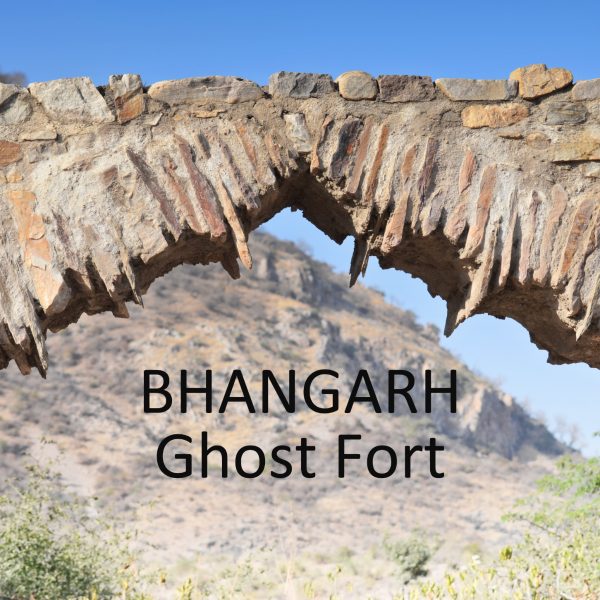
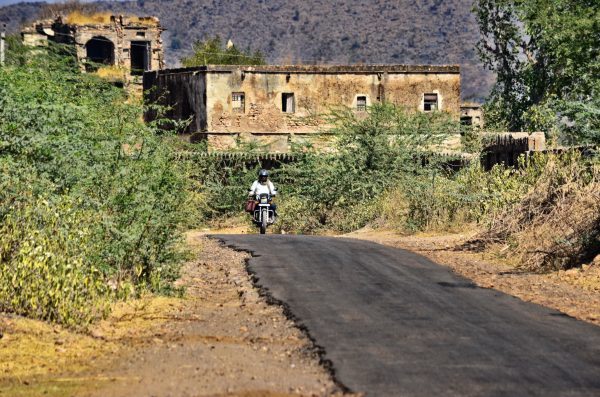
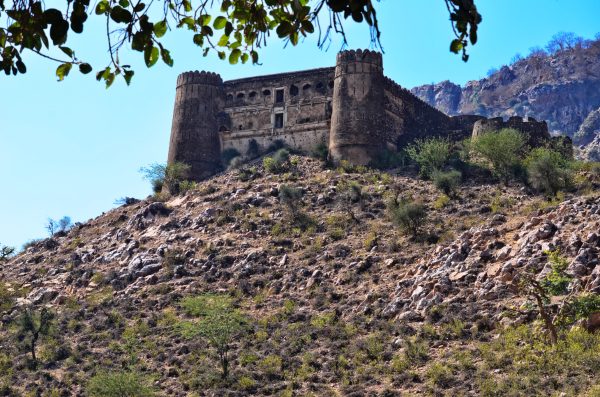


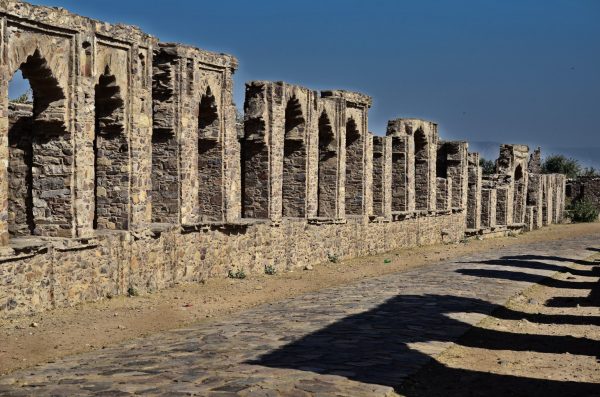
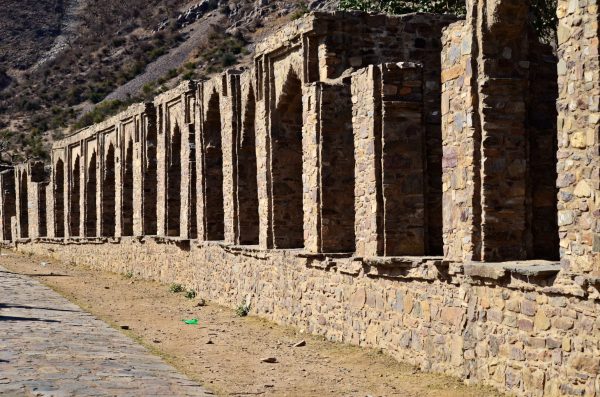
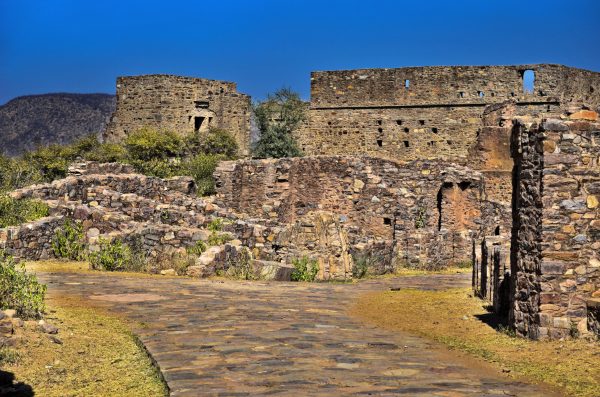

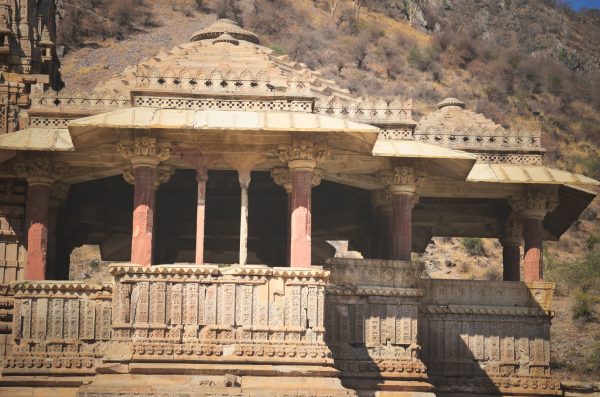
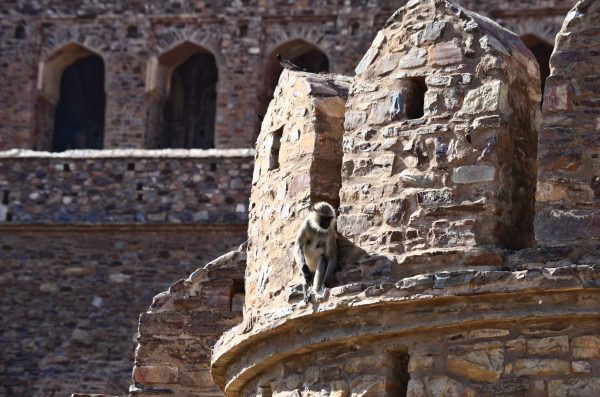
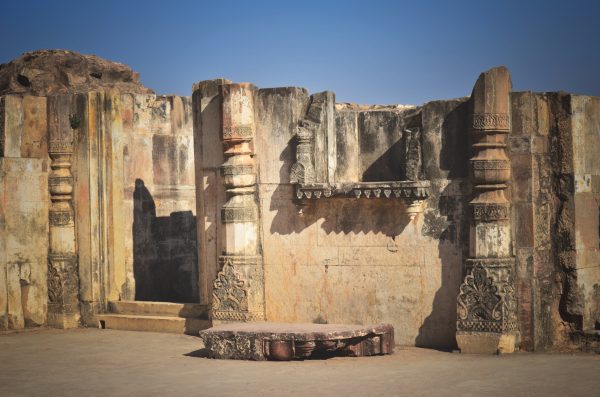

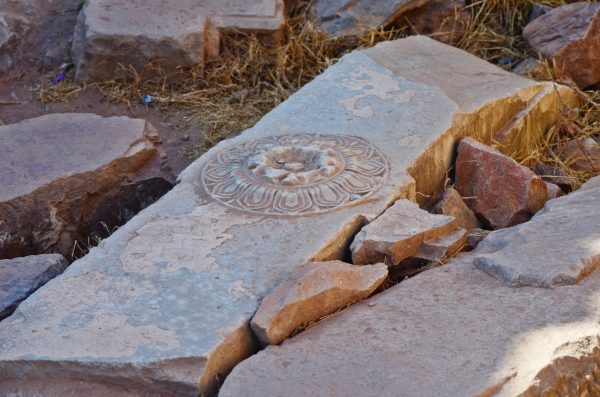
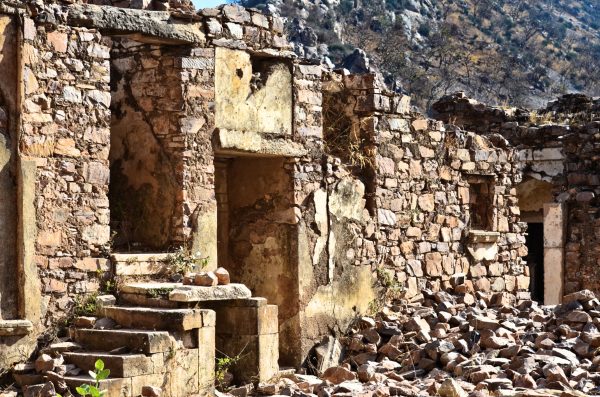
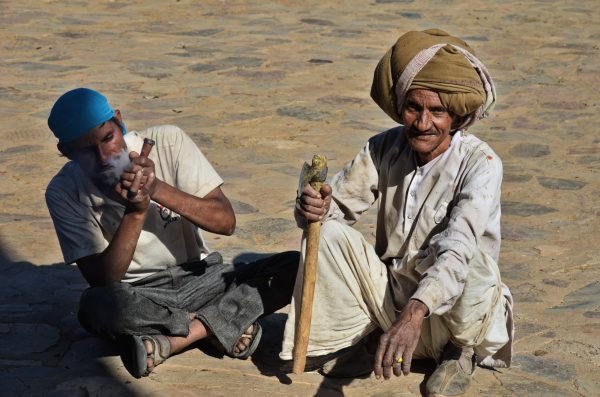
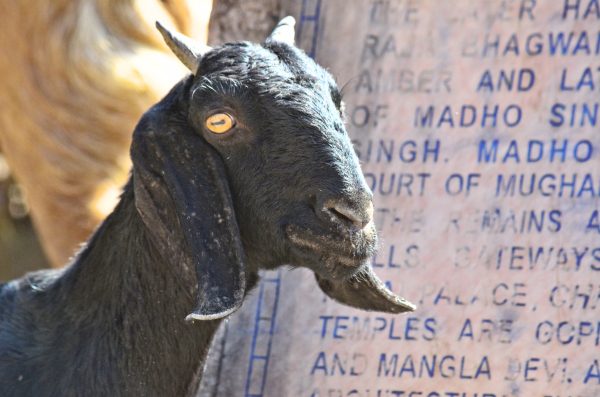








6 comments
Shilpi Dutta says:
Feb 9, 2018
hehe I liked the eerie eyed goat. Each time I talk about going to Bhangarh, husband refuses. He says there is a lot of negative energy that puts you off and one ends up fighting/sulking/in bad mood. Did you also feel such negative vibes there?
Arvind Passey says:
Jun 1, 2018
No negative vibes anywhere there. In fact, we even visited those parts just outside the fort wall where villagers have their sacrificial rituals even today. Loved the place actually.
Mithun says:
Feb 9, 2018
Nice blog sir. I was avoiding this place but now will go.
Arvind Passey says:
Jun 1, 2018
Bhangarh isn’t a place to be avoided. The ruins here give a fairly good idea of the way things may have happened in the past. Most ruins are in a condition that no conversation can take place.
Yogi Saraswat says:
Feb 9, 2018
Wow ! So beautiful place . I have read a lot about this place but unfortunately could not make a plan to be there
Arvind Passey says:
Jun 1, 2018
Do visit the place. I will be uploading more posts on my Sariska-Bhangarh_Siliserh trip soon. Do check them out.